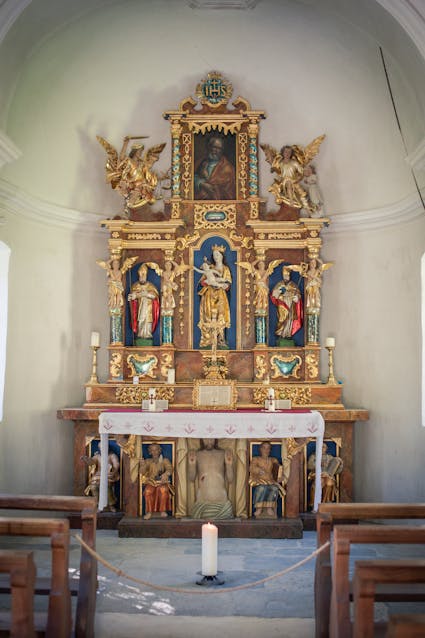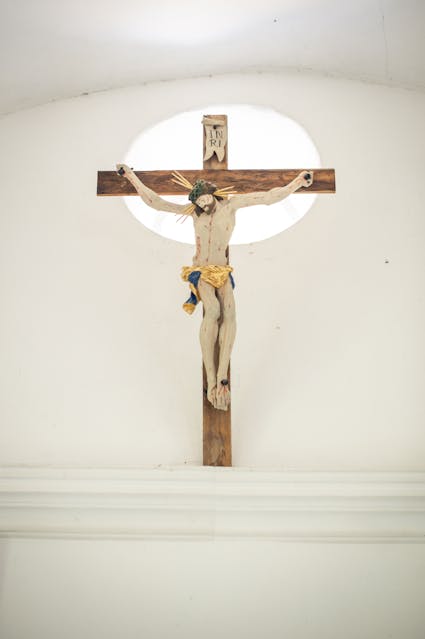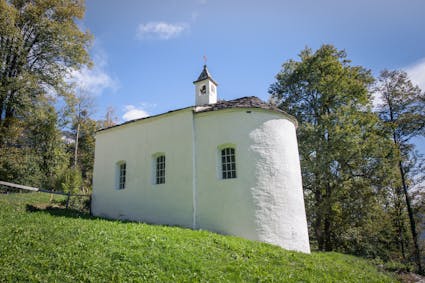1131 – Chapel from Turtig/Raron, Valais, 18th Century
The sacral building was erected in 1700–1750 and is typical of the heyday of baroque chapel construction in the Valais.

Complete Settlement
The village of Turtig lies across from Raron on the old imperial highway through the Valais. The linear hamlet has everything that a Valaisan village should: dwellings with friezes and door arches framed in stone, hay sheds and granaries, stalls and barns, even a small wash house where slaughtering and distilling were also done. All the materials needed for a largely self-sufficient way of life were available, whilst some buildings indicate that transit traffic to the passes also buttered some bread here. The religious sphere also left some architectural traces. A chapel is documented in 1670 on the occasion of the marriage of an illustrious pair: the clerk of courts Johannes Kalbermatter and Juliana Allet from Leuk. The present sacral building was erected in 1700–1750 and is typical of the heyday of baroque chapel construction in the Valais.

Practised Religion
The first chapel was dedicated to Saint Laurentius, Saint Agatha is recorded as patron in 1795. Otto Zumoberhaus, born 1929 in Raron and growing up after 1933 in the house opposite the chapel, remembers the annual pilgrimages in May: people came from Raron in a procession and prayed for good weather and a good harvest. On Agatha Day, the 5th of February, the fire company of Raron attended a mass in the chapel.

Profane Re-use
In 1943 the vault collapsed. In 1951 a new chapel 400 metres (1312 feet) to the northeast was consecrated and still fulfi ls its function. What became of the old abandoned chapel? Deteriorated sacral buildings or those replaced by new construction can be deconsecrated and then serve other uses. Such re-used chapels occasionally appear in the Valais, where they serve as a cheese cellar (Binn valley), as a vacation chalet on the alp (Lötschen valley), as a dwelling in the village (Les Haudères), as a post offi ce (Chandolin) or as a hairdresser’s salon (Val de Bagnes). Most often former chapels are used as storehouses. In Turtig all sorts of equipment and building material cluttered the derelict nave. For a while it was a goat stall.

Last Minute
Otto Zumoberhaus, living after retirement in the house across the way again, took pity on such a sorry sight and bought the former chapel in 1999, intending to demolish it. A permit had already been issued but in 2000, before the wreckers started, it was learned through a chance contact that the Ballenberg Open-Air Museum was seeking a chapel. Since the altar, paintings, pews and crucifi xes of the old chapel have been in service in the new chapel in Turtig since 1951, the Open-Air Museum had some copies made and found other originals elsewhere in the Valais.

Ballenberg
Swiss Open-Air Museum
Museumsstrasse 100
CH-3858 Hofstetten bei Brienz
Opening hours Administration
3 November 2025 to 8 April 2026
From Monday to Friday
8.30 am to 11.30 am
1.30 pm to 4.30 pm
Opening hours
9 April to 1 November 2026
10 am to 5 pm daily